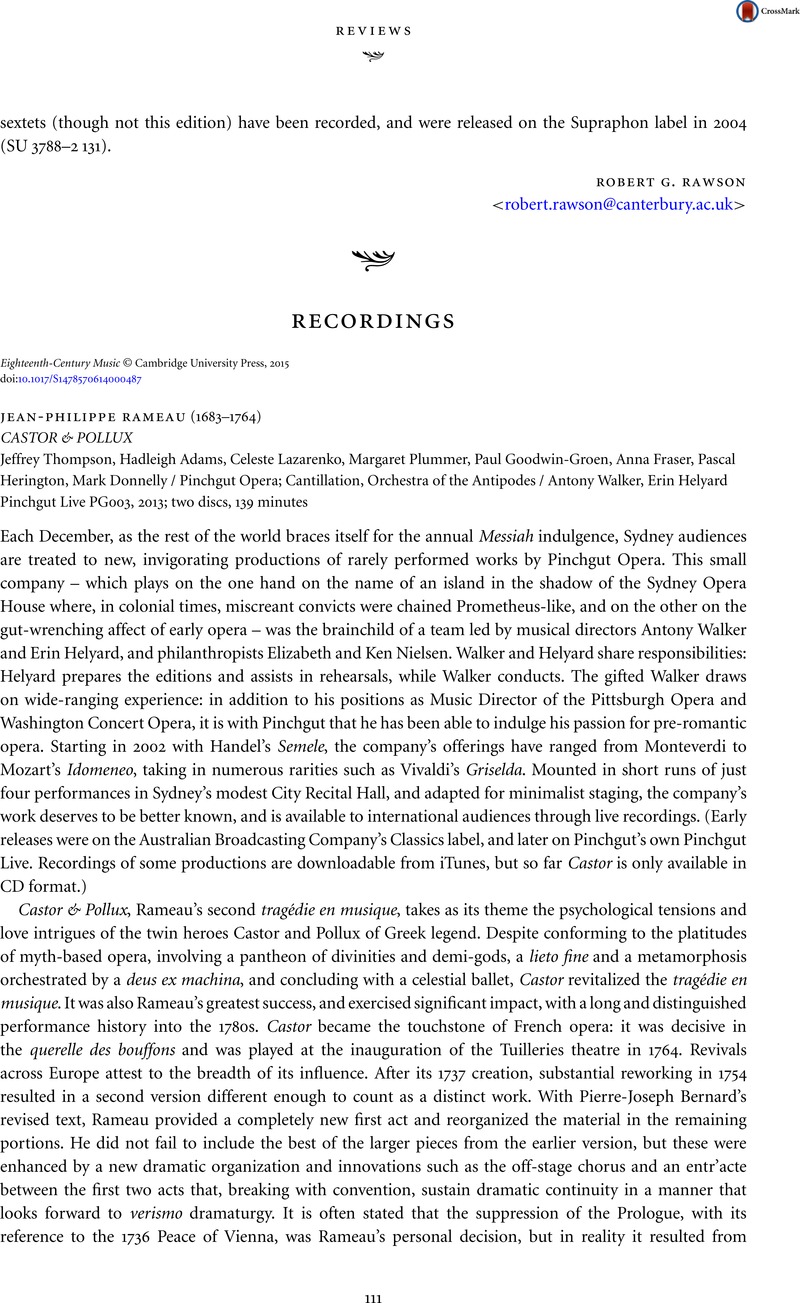No CrossRef data available.
Article contents
JEAN-PHILIPPE RAMEAU (1683–1764) CASTOR & POLLUX Jeffrey Thompson, Hadleigh Adams, Celeste Lazarenko, Margaret Plummer, Paul Goodwin-Groen, Anna Fraser, Pascal Herington, Mark Donnelly / Pinchgut Opera; Cantillation, Orchestra of the Antipodes / Antony Walker, Erin Helyard Pinchgut Live PG003, 2013; two discs, 139 minutes
Published online by Cambridge University Press: 17 February 2015
Abstract
An abstract is not available for this content so a preview has been provided. Please use the Get access link above for information on how to access this content.

- Type
- Reviews: Recordings
- Information
- Copyright
- Copyright © Cambridge University Press 2015




